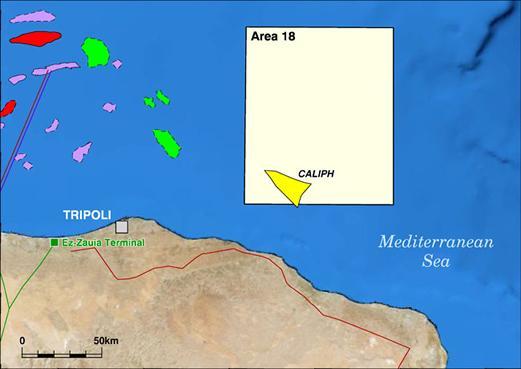The question
The drillship “Magna Belgica” in the wider area of ‘Caliph prospect’ off the coast of Libya encountered a technical failure. A fire and crude oil leak began immediately. The spill was contained within a duration of 5 hours with total of 50 tons crude oil loss at sea surface.
After initial repairs the vessel set sail for inspection in Naples. Reaching the strait of Messina around 06:15 CET this morning, the drillship experienced engine and rudder failure leading to a collision with a cargo ship. The drillship was heavily damaged and lost a total load of 2000 tons of diesel fuel oil by 10:20 CET.
The method
A number of forecasts were run .The response team calculated currents from the Copernicus Marine Service ocean forecasting system, wave height from the Cypriot CYCOFOS model, wind from the Greek SKIRON and POSEIDON meteorological models and the European Centre for Medium Range Weather Forecasting Centre. The Italian MEDSLIK and MEDSLIK II models were used to calculate the convection and dispersion of oil.
The hourly Copernicus forecasts are more accurate than the ones that only produce a forecast every day but they can only deliver up to five days ahead instead of ten.
|
forecasting package |
1 |
2 |
3 |
4 |
|
oil slick |
MEDSLIK-II |
MEDSLIK |
MEDSLIK |
MEDSLIK |
|
current |
Copernicus |
Copernicus |
Copernicus |
Copernicus |
|
temporal resolution (hours) |
1 |
24 |
24 |
1 |
|
spatial resolution (km) |
6. |
6.5 |
6.5 |
6.5 |
|
days of forecast |
5 |
10 |
10 |
5 |
|
update frequency (days) |
1 |
1 |
1 |
1 |
|
waves |
- |
CYCOFOS |
CYCOFOS |
|
|
temporal resolution |
- |
3 |
- |
3 |
|
spatial resolution |
- |
10 |
- |
10 |
|
days of forecast |
5 |
- |
5 |
|
|
update frequency (days) |
1 |
- |
1 |
|
|
wind |
ECMWF |
SKIRON |
ECMWF |
POSEIDON |
|
temporal resolution (hours) |
6 |
1 |
24 |
1 |
|
spatial resolution (km) |
25 |
5 |
25 |
5 |
|
days of forecast |
5 |
10 |
10 |
5 |
|
update frequency (days) |
1 |
1 |
1 |
1 |
The assumptions
It was assumed that the oil in the Libyan incident was a medium crude. This can have an American Petroleum Institute (API) gravity of between 22.3 and 31.1. A value of 26 was assumed.
Results after 24 hours
|
Libyan spill after 5 days (package 1) |
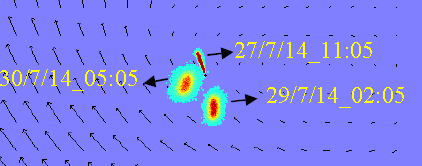 Libya simulation - forecasting package 3 |
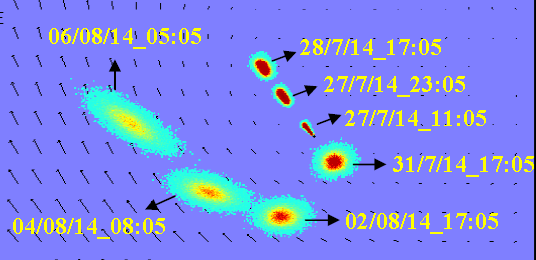 Libyan simulation - forecasting package 3 |
oil on surface after 5 days with foreasting package 1 on left, in centre with forecasting package 2 and on right forecasting package 3 (after ten days)
fate of oil with forecast package 2 (the others gave simlar results. None reached the coast
Straits of Messina
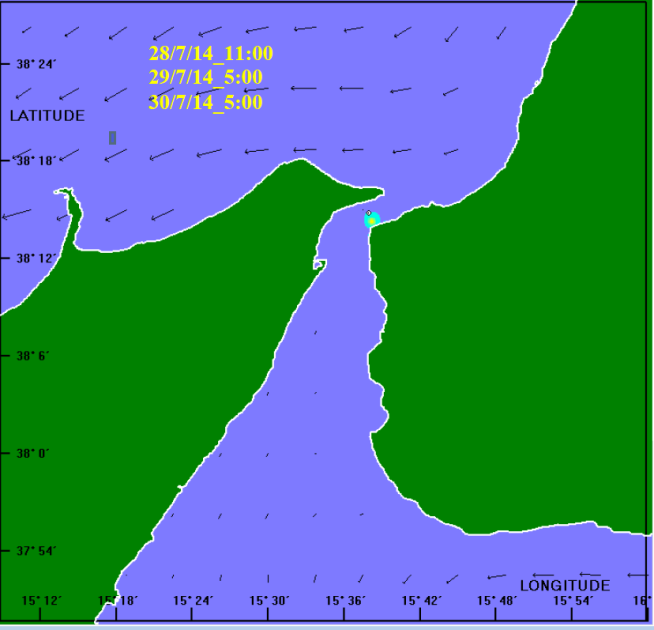 forecasting package 2 |
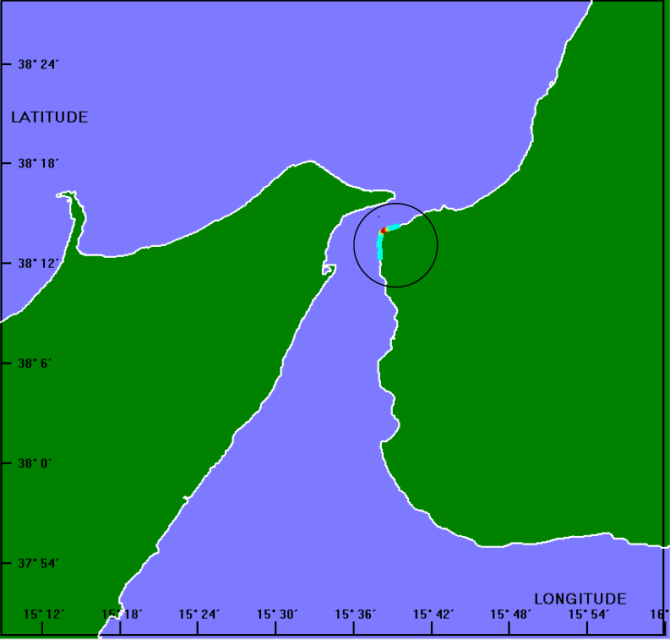 forecasting package 2 |
| package 2, superimposition of slick forecasts at 28/7 11:00, 29/7 :00 and 30/7 5:00 | package 2, oil on coast after 2 days |
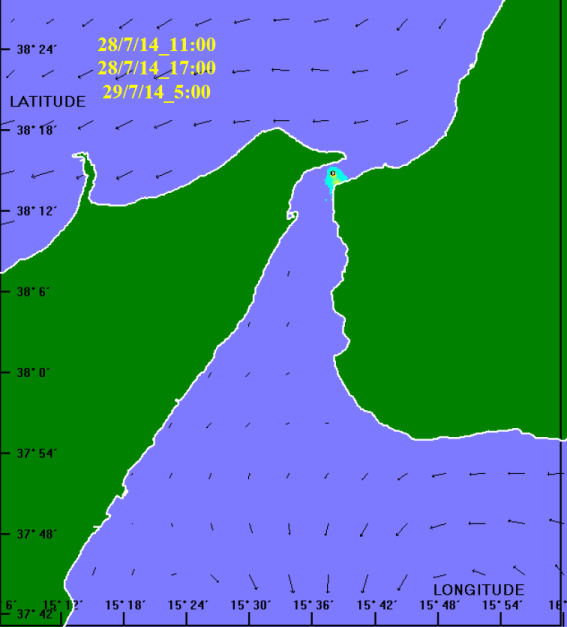 package 3 |
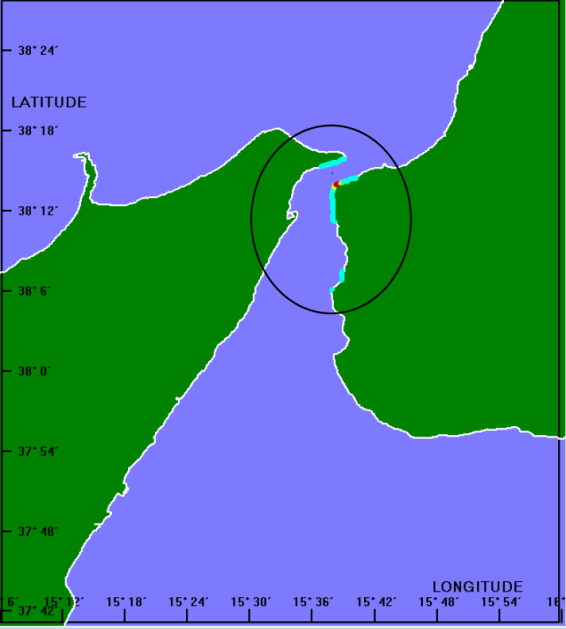 package 2 |
| package 3, superimposition of slick forecast at 28/7 11:00, 29/7 :00 and 30/7 5:00 | package 3, oil on coast after 9 days |
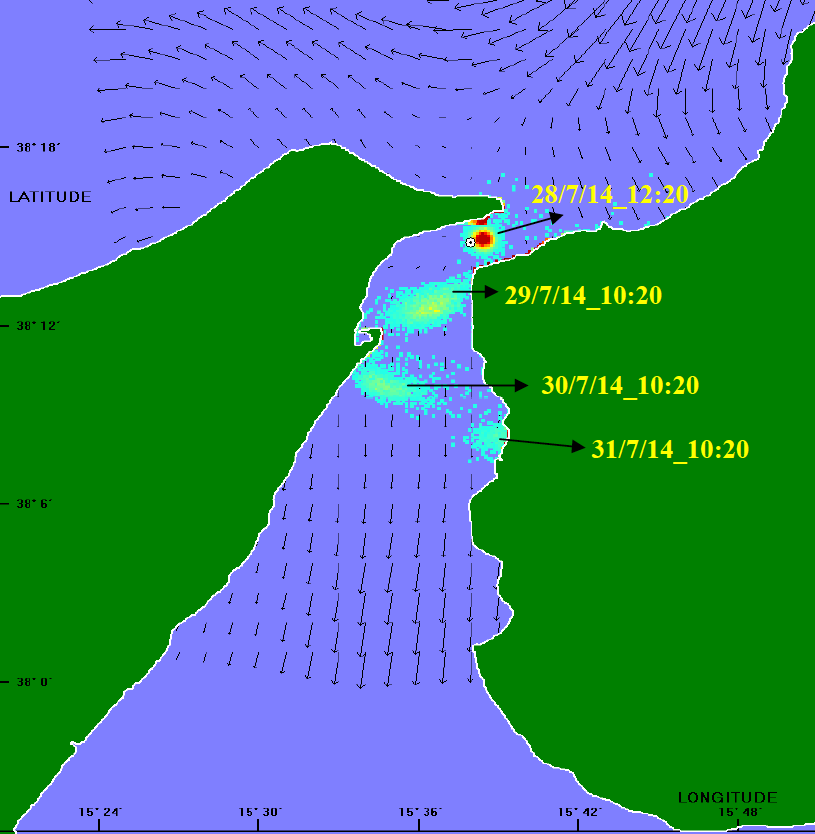 package 3 |
 package 3 |
| package 4, superimposition of slick forecast at 28/7 12:20, 29/7 10:20, 30/7 10:20, 31/7 10:20 | package 4, oil on coast after 5 days |
fate of oil (package 4)
remarks
Ocean models (currents and sea surface temperature), wind models and wave models and the oil spill models can all be source of uncertainties. In the future the results of different forecasting packages (i.e. different oil spill model simulations using different forcings -currents, wave and winds-) will be presented side by side in order to enable a better comparison. The characteristics of the models used (spatial and temporal resolution, temporal horizon) will be clearly specified in the Bulletin.
Work is ongoing on the integration of the oil spill models simulations with the human activities and environmental habitats that may be disturbed by the pollution events.
background
The EMODNET MedSea project will evaluate the quality of the current monitoring systems in terms of their accessibility, availability, multiple-use, efficiency, reliability, time consistency, space consistency, as well as the planning of technological advancements, new accessibility, new assembly protocols and observational priorities required to meet challenges

